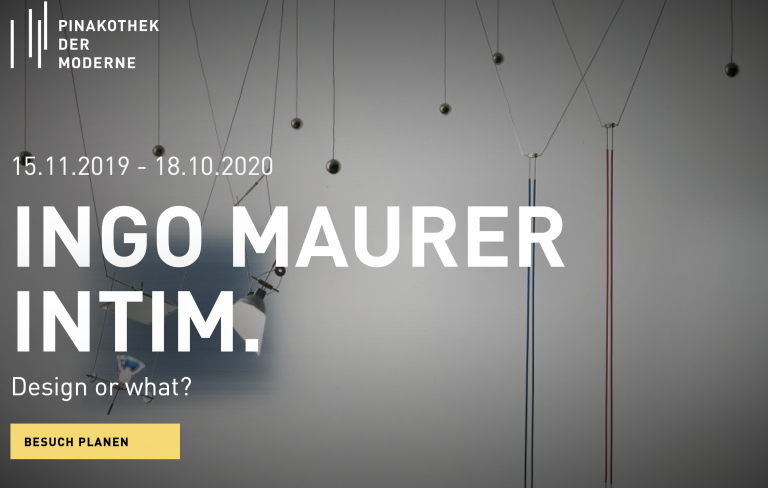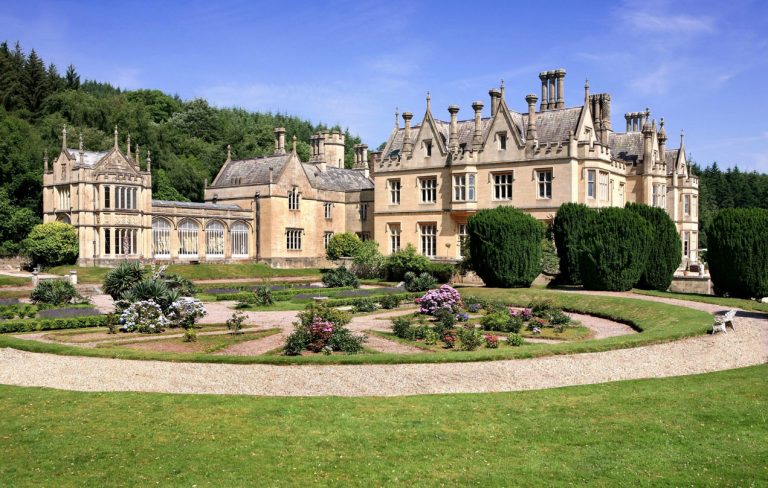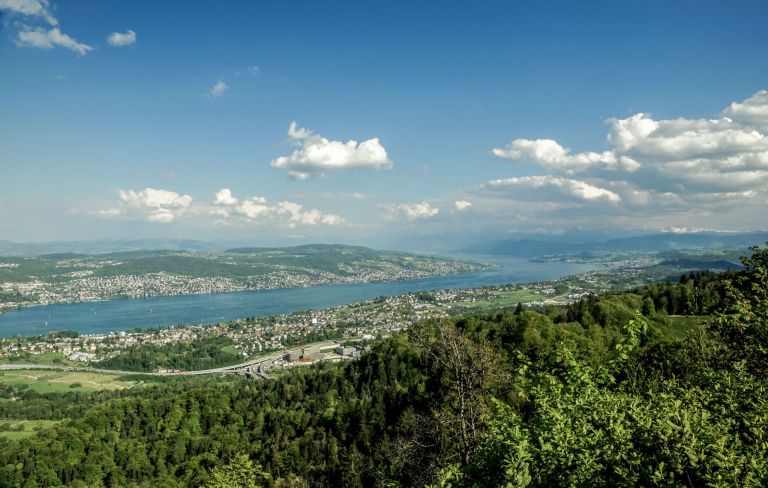This year’s 17th Venice Architecture Biennale promises an answer to the question of how we will live together in its title. The Wüst-und-Wüst-Magazin editorial team went to see whether it can provide this answer and returned home with mixed feelings.
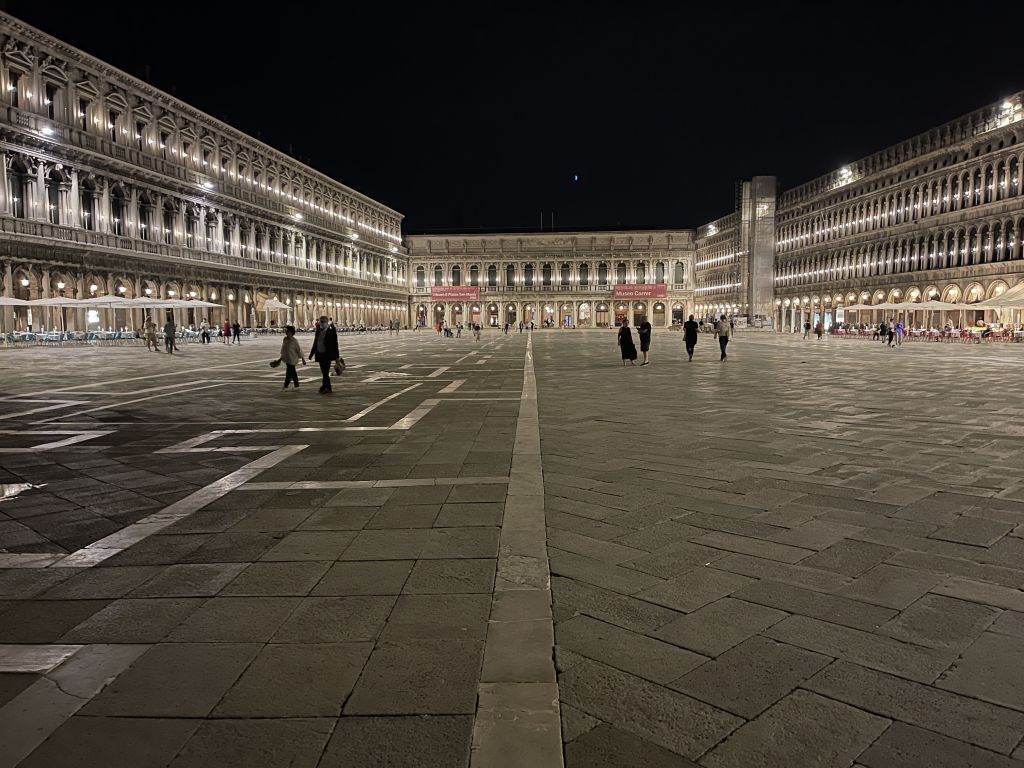
At the moment even the Piazza San Marco is almost deserted. Photo: Werner Mäder, Uetikon
Apart from a few really great installations at the biennale, we are left with the memory of a Venice still without streams of tourists, of a few summery days in the impressive old town and of the feeling of a reawakening normality.
What does the theme question stand for?
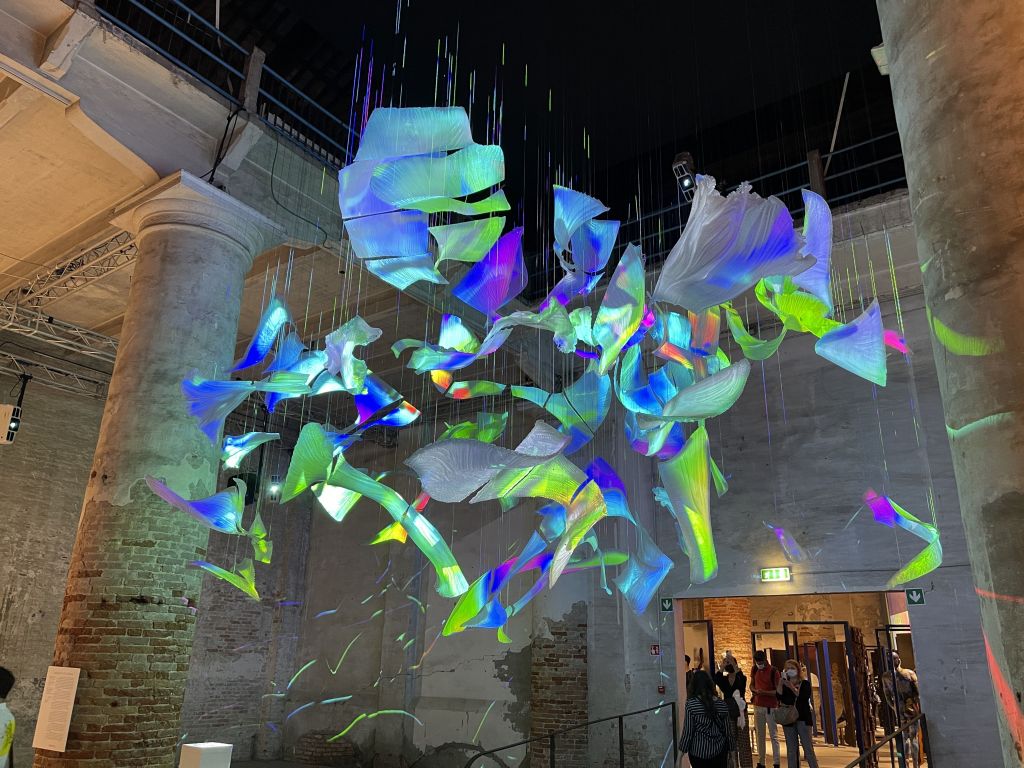
Right at the entrance to the Arsenale, a dazzling mobile fascinates. Photo: Werner Mäder, Uetikon
The curator of the 17th International Architecture Exhibition and architect Hashim Sarkis decodes the thematic question of how we will live together like this:
- How: Deals with practical approaches and concrete solutions and emphasises the primacy of problem solving in architectural thinking.
- Will: Signals a look to the future, but also the pursuit of vision and determination, drawing on the power of the architectural imaginary.
- We: Stands for the first person plural and thus includes other peoples, other species and appeals to a more empathetic understanding of architecture.
- Live: Means not simply to exist, but to thrive, flourish, inhabit and express life, tapping into the inherent optimism of architecture.
- Together: Implies collectives, commons, universal values and highlights architecture as a collective form and a form of collective expression.
- The Question Mark: Points to an open, non-rhetorical question that seeks (many) answers and celebrates the plurality of values in and through architecture.
Architecture as a response to current changes
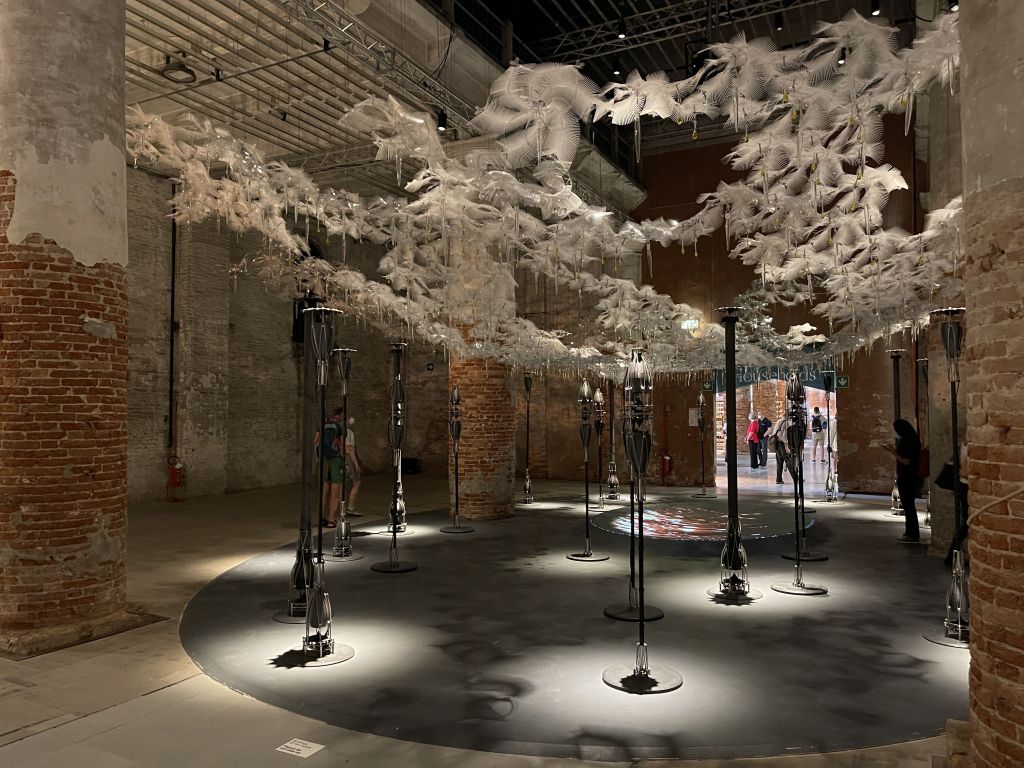
Philip Beesley & Living Architecture Systems Group, University of Waterloo School of Architecture; Grove, 2021; Photo Werner Mäder, Uetikon
In his statement on the exhibition’s motto, curator Hashim Sarkis writes: «It is indeed as much a social and political question as a spatial one. More recently, rapidly changing social norms, the political polarization between left and right, climate change, and the growing gap between labor and capital are making this question more urgently relevant and at different scales than before. In parallel, the weakness of the political models being proposed today compels us to put space first and, perhaps like Aristotle, look at the way architecture shapes inhabitation in order to imagine potential models for how we could live together.»
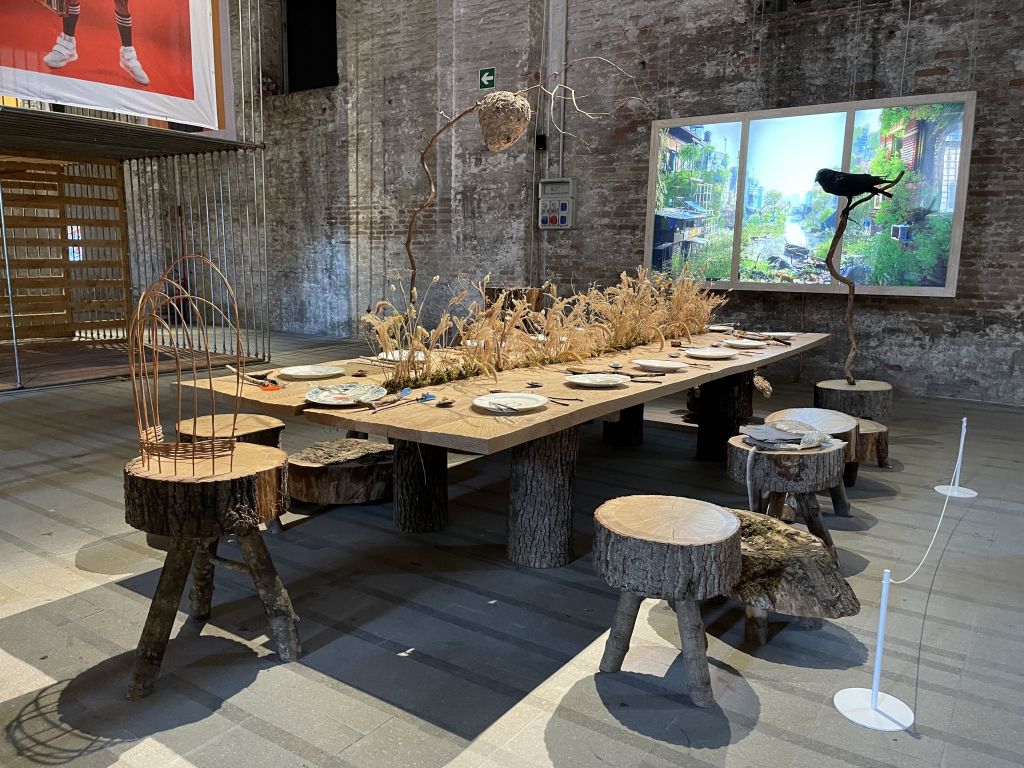
OPAFORM architects; How will we live together?, 2020; Photo: Werner Mäder, Uetikon
In his detailed and richly illustrated online article by baunetz id, the author Norman Kielmann writes on the theme of the Biennale under the title “Mad Max meets Jungle Book”: “Asking questions is suddenly more important than giving answers. To analyse the present, we look to the future.”
And further: “Especially in the Arsenale, the screen is stretched wide open. You see robots constructing buildings and landscapes. Humans have been transformed into cyborgs. Alien-like beings are bred in water-filled glass cylinders. The world is in a post-apocalyptic state. And yet the people don’t let it get them down. They hold boisterous dinner rounds together with other hybrid beings at large oak tables, as in the work Refuge for Resurgence by Anab Jain, Jon Ardern and Sebastian Tiew from the London design studio Superflux. The plates and cutlery are assembled from natural objects and artefacts. Mad Max meets Jungle Book.”
Cooperation in the sense of “together” is fascinating.
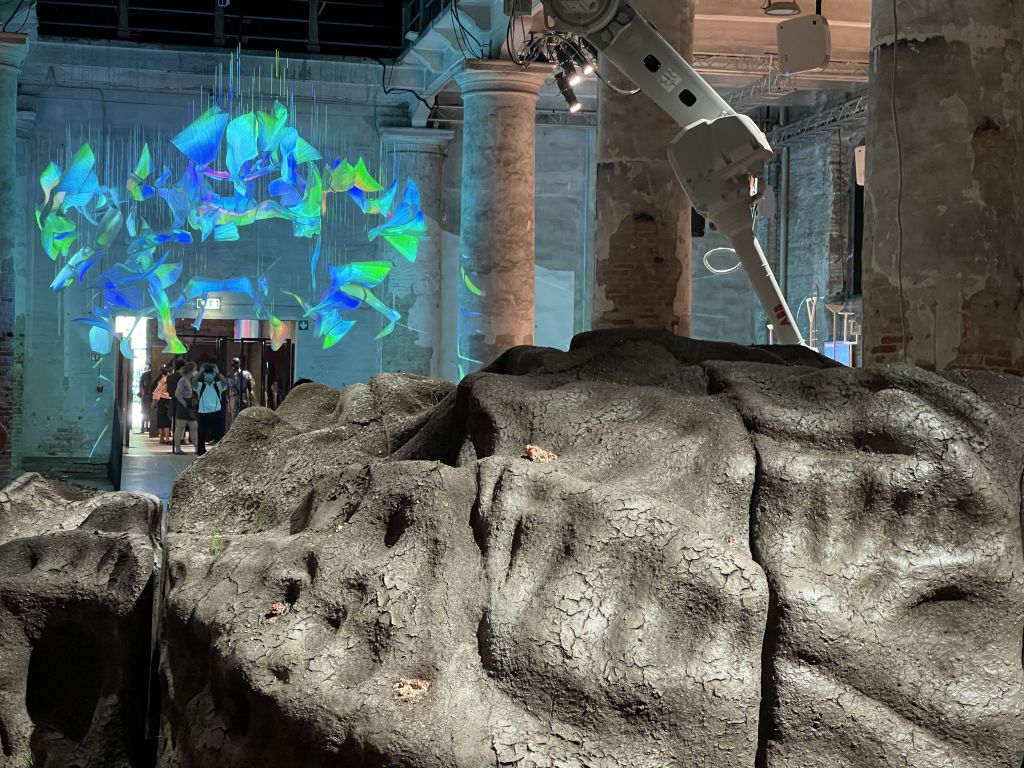
MAEID, Büro für Architektur und transmediale Kunst / Magic Queen [from the Artificial Ecologies series], 2020 / Photo: Werner Mäder, Uetikon
The Biennale leaves behind mixed feelings
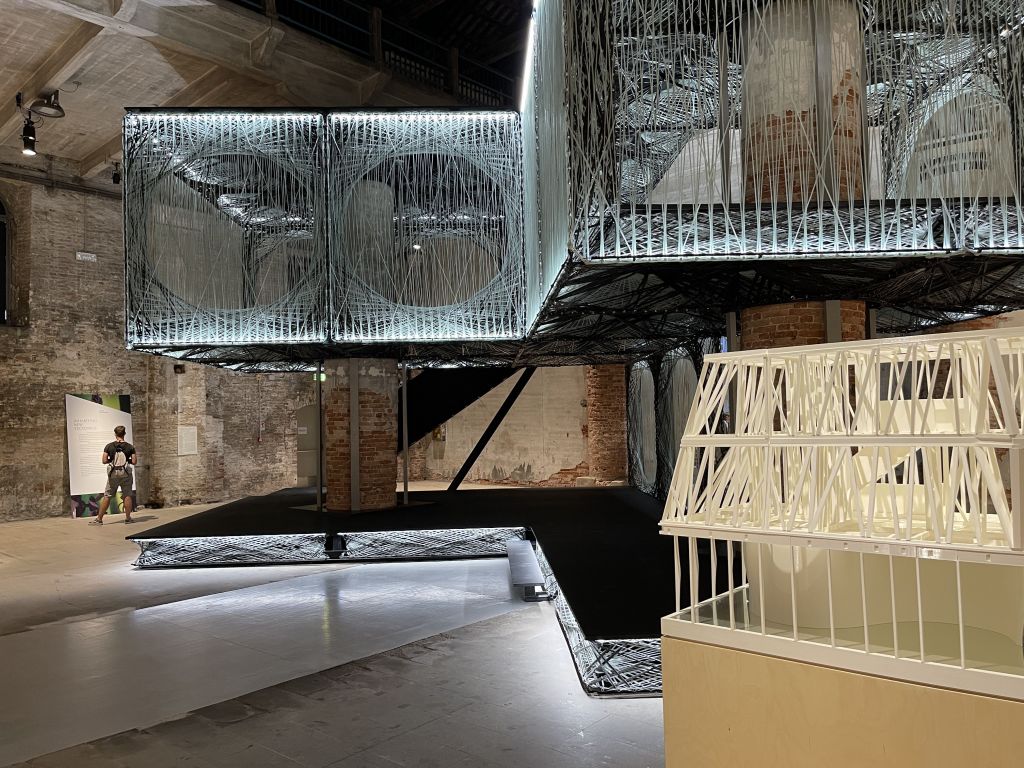
Achim Menges, ICD Universität Stuttgart und Jan Kippers, ITKE Universität Stuttgart; Material Culture: Rethinking the Physical Substrate for Living Together, 2021; Photo: Werner Mäder, Uetikon
Wandering through the – ironically military – historic halls of the Arsenale (the name stands for the former shipyard, armoury and naval base of the former Republic of Italy), one feels more like being in an art exhibition than an architectural one. This is not a negative thing, because what is on display here is partly of high design quality and definitely thought-provoking.
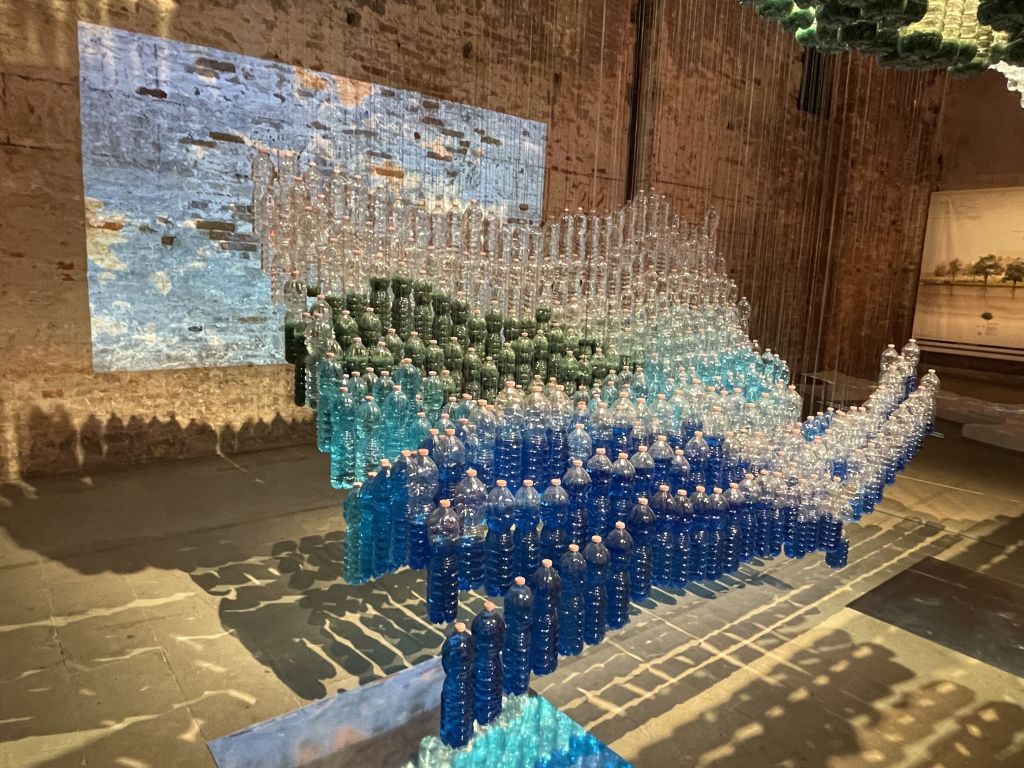
Symbols for the affluent society – deterrent and aesthetic at the same time; Photo: Werner Mäder, Uetikon
Die Biennale ist in fünf Abschnitten organisiert
The projects range from the analytical to the conceptual, the experimental, the tried and tested to the widely known. The five thematic areas are
- Among Diverse Beings (Arsenale) – This area deals with changes in the perception and conception of the human body, empathic behaviour and engagement with other beings.
- As New Households (Arsenale) – This is about responding to the changing composition and density of households; exploring technologies that enable innovative housing; expanding the possibilities of the apartment building as a collective housing typology.
- As Emerging Communities (Arsenale) – This section looks at new ways for communities to organise themselves spatially, proposes new forms of social institutions (parks, schools, hospitals, etc.). ), imagines the future of Venice in the face of the challenges of sea-level rise, pandemics and changing demographics, and shows forms of coexistence in Addis Ababa, the Azraq refugee camp, Beirut, Hong Kong, the Indo-Pakistani corridors, a squatter settlement in Lagos compared to one in Cairo and another in Guadalajara, New York, Pristina, Rio de Janeiro and the Sao Paulo region.
- Across Borders (Giardini, Central Pavilion) – This section looks at how to reconcile the growing social and economic disparities between global cities and the global hinterland, makes proposals for a better distribution of our common resources, and reports on attempts to reconcile architecture with the protection of endangered treasures.
- As One Planet (Giardini, Central Pavilion) seeks to anticipate and calibrate the future of our planet, makes a proposal of a speculative more-than-human future for the United Nations, presents solutions in the face of global environmental degradation, and establishes a connection between Earth and space.
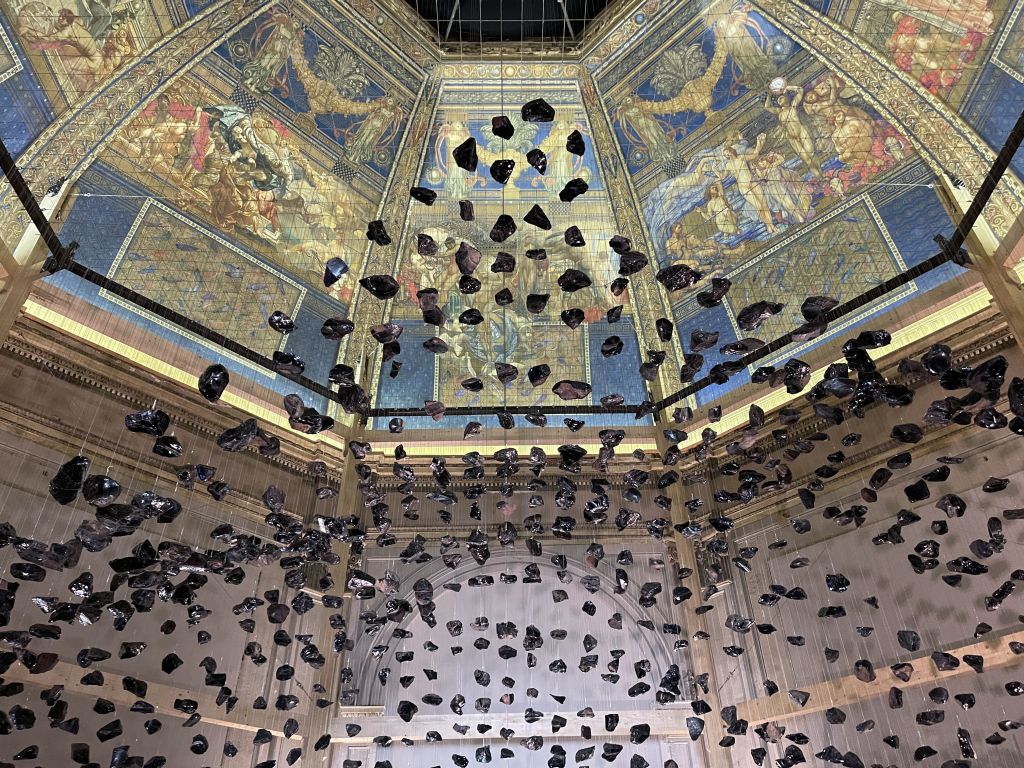
Cave Bureau, Teh Antropocene Museum: Exhibit 3.0 Obsidian Rain, 2017; Photo: Werner Mäder, Uetikon
While walking through the large halls and the numerous exhibits, these themes did not always open up to us intellectually, despite the often fascinating realisation. For a somewhat easier understanding of the relationship to the theme, we would have appreciated somewhat more detailed explanations of the works in some cases, but in other cases these might have limited our own imagination.
63 Nationen in ihren Länderpavillons
As always, a large number of nations present themselves in the Giardini of the Biennale in their respective national pavilions or with their own contributions. This year there were a total of 63 nations.
Pavilion of Spanien
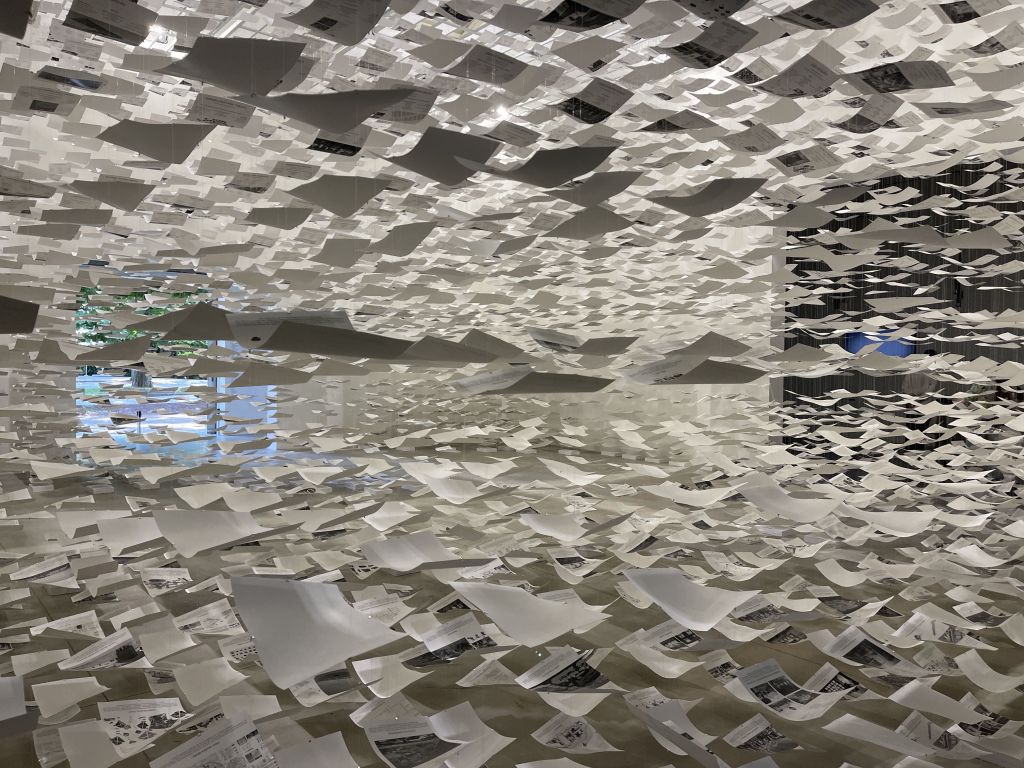
Uncertainty, Spanish Pavillon; Curators: Domingo Jacobo González Galván, Sofía Piñero Rivero, Andrzej Gwizdala, Fernando Herrera Pérez; Photo: Werner Mäder, Uetikon
Here, with a very sensitive installation of thousands of leaflets, each with a project by a Spanish architect, the Spaniards spoke to us very intuitively and showed how diverse the ideas of architecture can be about living together in the future.
Swiss Pavilion
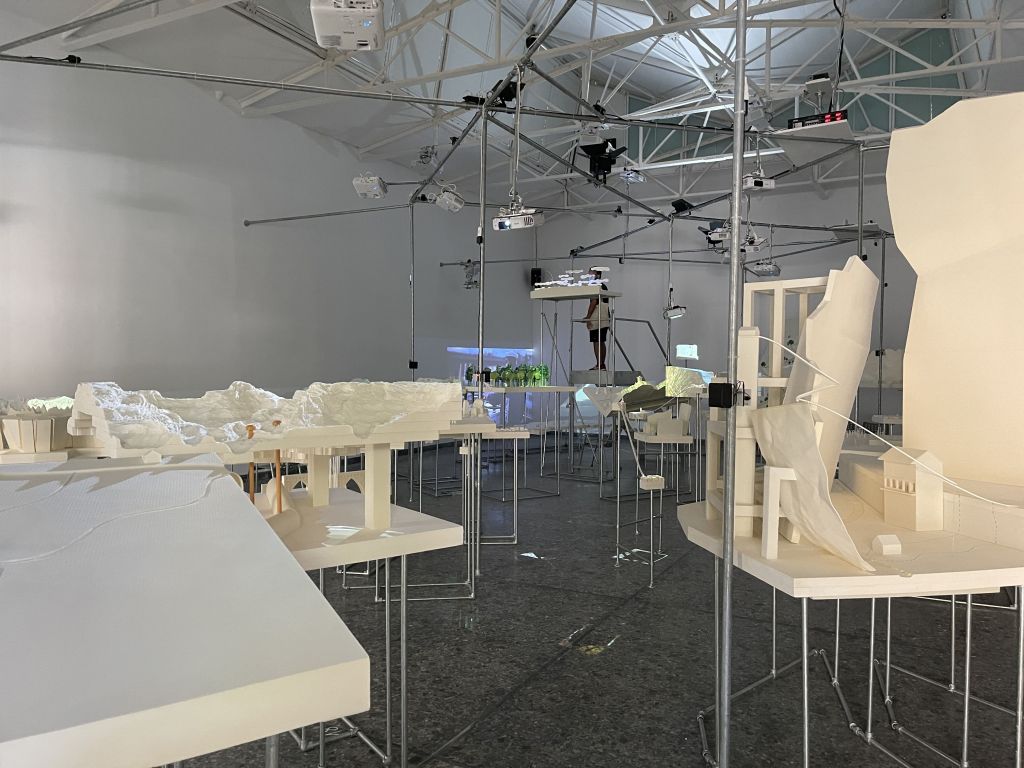
Orte – Experiences on the Border; Pro Helvetia (Madeleine Schuppli, Sandi Paucic, Rachele Giudici Legittimo); Curators/ Exhibitors: Fabrice Aragno, Mounir Ayoub, Vanessa Lacaille, Pierre Szczepski; Photo: Werner Mäder, Uetikon
For Switzerland, Pro Helvetia tried to make life near the Swiss border a visual and intellectual experience with its project “Orae – Experiences on the Border”.
Chile Pavilion
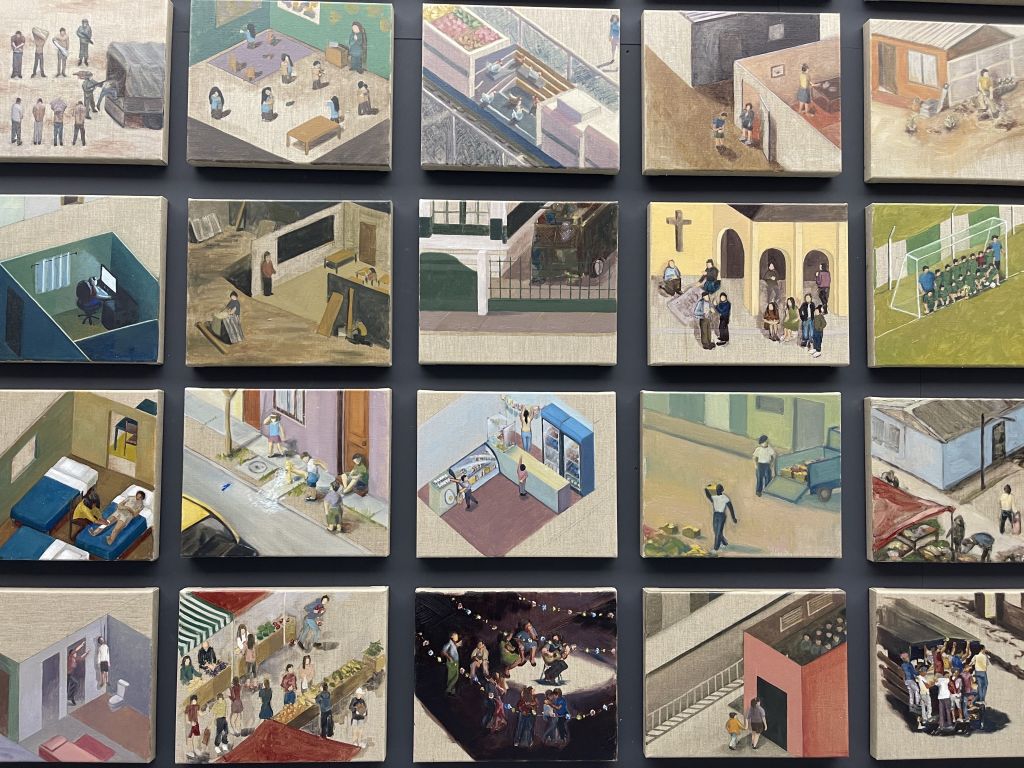
Testimonial Spaces in the Chilean Pavillon; Curators: Emilio Marín, Rodrigo Sepúlveda; Foto: Werner Mäder, Uetikon
We were also inspired to think about living together and everyday life by the small but nice exhibition in the Chile Pavilion. Here, Chilean curators have transformed 500 testimonies – small narrated histories from people’s everyday lives – into 500 paintings. Based on a set of formal rules and collective work diluting authorship in the neighbourhood community, painters and historians have gathered the stories of the emblematic José Maria Caro settlement and transformed them into paintings. These latter go through different spaces, recalling past and present lives within this community.
